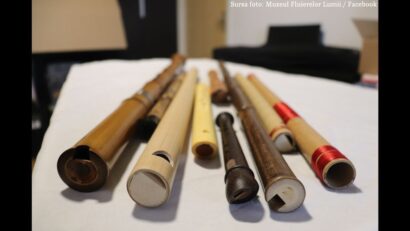The Oltcit automobile
Romania used to manufacture four automobile brands, of which only Dacia has continued the tradition.

Steliu Lambru, 23.01.2016, 14:51
Romania used to manufacture four automobile brands, of which only Dacia has continued the tradition. Following Dacia and ARO, Oltcit was the third passenger automobile made in Romania. It emerged in the mid 1970s, more precisely in 1976, when the Romanian government created a joint venture with the French Citroen consortium. The traditional French-Romanian ties, seriously discontinued over 1945 and 1965, were thus resumed. We recall that around 1965 Romania’s partnerships with France improved significantly, meaning that Romania imported French technology for almost all branches of its industry. The best-known such partnership was that between the Romanian state and Renault, which resulted in the creation of Dacia automobile in the late 1960s.
The factory where the new car would be manufactured was built in Craiova, the main city of the south-western region of Oltenia. The Romanian state had a 64% share of the investment, while Citroen contributed 36%. The name of the brand, Oltcit was a combination of the names Oltenia and Citroen. The main product was the automobile bearing the same name, whose manufacturing began in 1981.
The new platform for Oltcit was named Project Y, actually developing the Citroen Visa mini class model. For France, Western Europe and Canada, the Citroen consortium manufactured the same model, sold as Citroen Axel. The body of the car had two doors and a hatchback. The engine of the Oltcit Special version had four valves and a capacity of 652 cubic centimetres. It also had 34 horse power, could hit 120 kilometres per hour as maximum speed, while its petrol consumption ratio stood at 7 litres for a hundred kilometres.
The engine for the Oltcit Club version saw two successive improvements. The first one had a capacity of 1,129 cubic centimetres, 57 horse power, allowed a maximum speed of 150 kilometres per hour and its consumption ratio for a hundred kilometres stood at 8 litres. As for the other improved version of the engine, it had a capacity of 1,299 cubic centimetres, 61 horse-power, allowed a maximum speed of 158 kilometres per hour and its consumption ratio for a hundred kilometres stood at 7.3 litres.
Oltcit Club had a four-speed gearbox. In 1986, Citroen carmaker launched the Citroen AX model, also a mini model, a successor of Citroen Axel, which had a 5-door version. In the early production years, although the car factory in Craiova had a production capacity of 130,000 items, driving out of the factory were roughly 60,000 that is almost half of it. The main outlet for the Oltcit automobile was Romania.
Oltcit was a car designed for urban traffic. Whereas Dacia was the more popular car, capable of catering for almost all needs, Oltcit was mainly tailored for the population in urban areas, young families or single persons. It was a sign according to which its owners belonged to a more cosmopolitan social category, it was the automobile of the intellectuals. It was just as natural, since Oltcit belonged to the 1980s automobile generation, quite unlike Dacia, which was a car of the 1960s.
In 1990 Citroen notified the Romanian state it wanted to pull out of the partnership. The French firm invoked the poor quality of the car manufactured in Craiova, both in terms of aggregates, but also as regards assemblage and spare parts. Added to all that was the tension looming with the management in Craiova, who failed to observe the set standards. The Romanian state took over the 36% share package held by the French company, while the name of the automobile was changed from Oltcit to Oltena, a name under which Oltcit was manufactured until 1994. The logo was also changed.
The economic reforms and the restructuring process hit the Oltcit automobile really hard. In 1993, the output stood at 12,000 items, less that 10% of the factory’s production capacity since its inauguration, in 1981. The model that was last manufactured was the Oltena pick-up truck, a two-seater, manufactured between 1993 and 1995, having the old engine of 1,299 cubic centimetres and a five-speed gearbox.
A new period in the history of the car-making factory in Craiova began in 1994. The South-Korean carmaker Daewoo showed its interest in purchasing the factory, so once again the name changed, from Oltena to Rodae. At that time, Daewoo became the leading player on the Romanian car market and after retechnologization would manufacture its own models, such as Tico, Cielo and Espero, Matiz and Nubira. Back then, Daewoo’s intended annual output stood at some 100,000 items.
But Daewoo did not spend much time with Craiova Automobile either. In 2002, General Motors bought the Daewoo automobile branch, but the package did not include the factory in Craiova. In 2006, the Romanian government once again became the owner of the factory it then sold in 2007 to the Ford automotive manufacturing plants, currently holding 72% of the share package. After a 72-year gap, Ford renewed the tradition of its presence in Romania. We recall that between 1935 and 1941, Ford had manufactured automobiles in its factory in Bucharest’s Floreasca district.





























